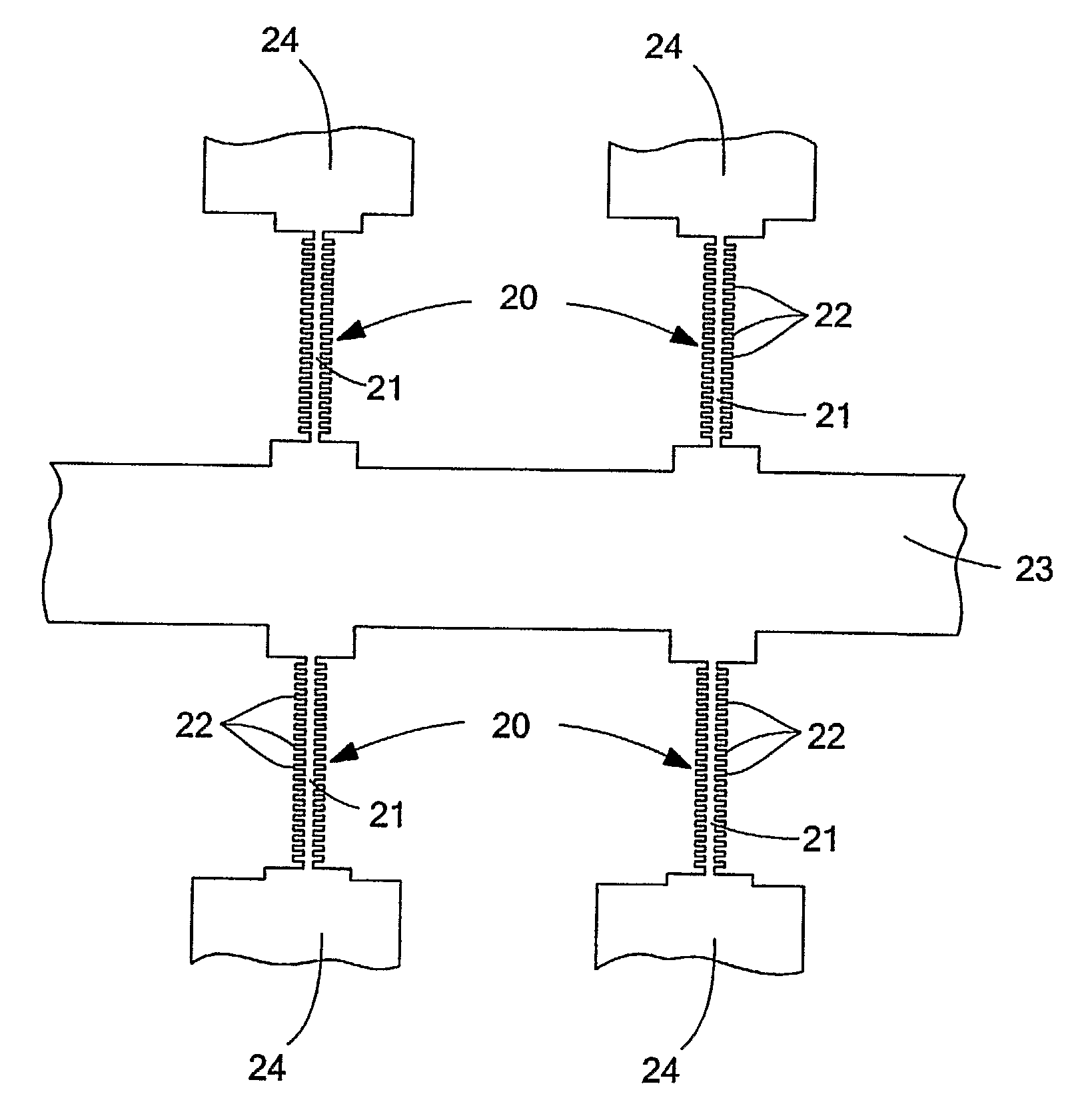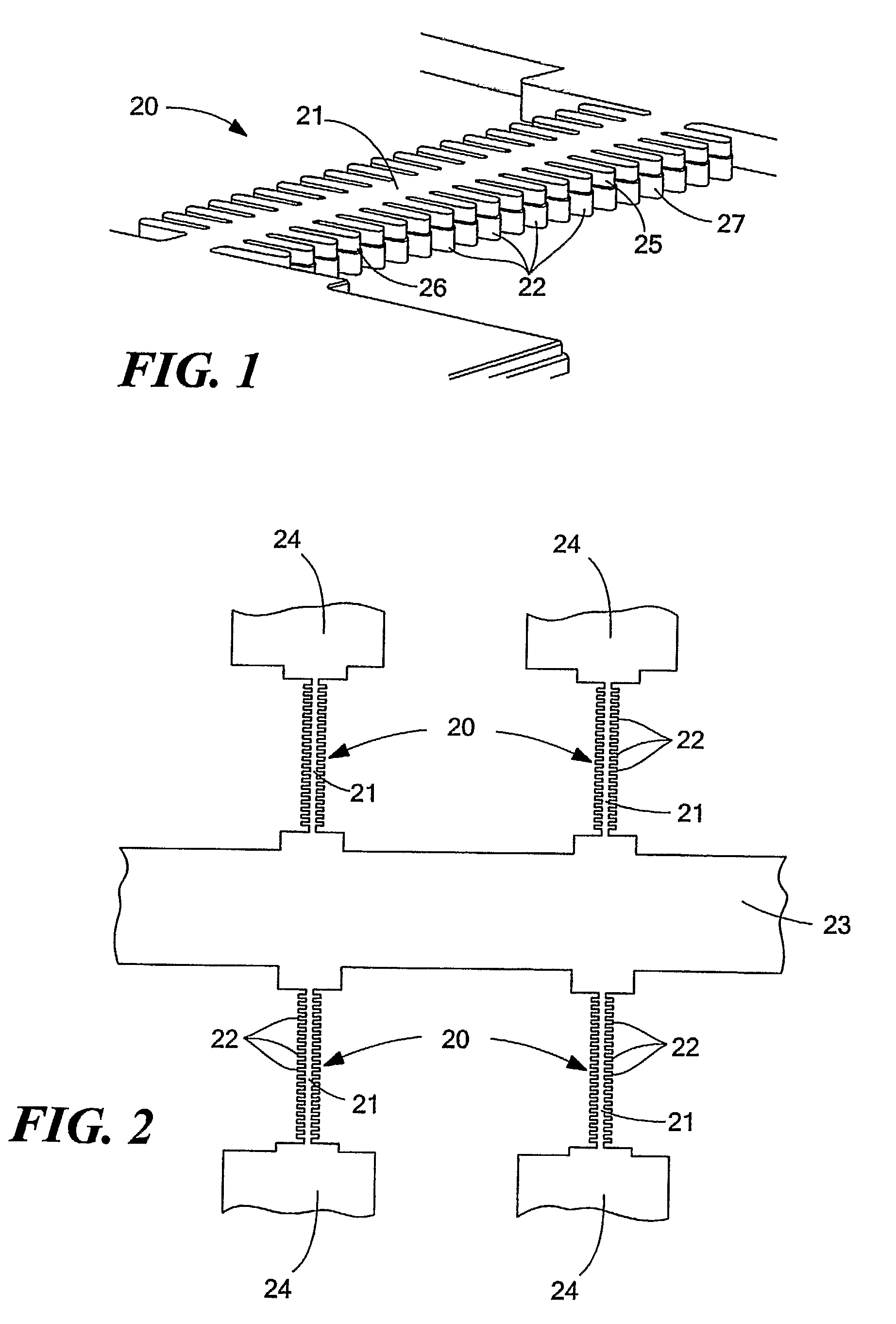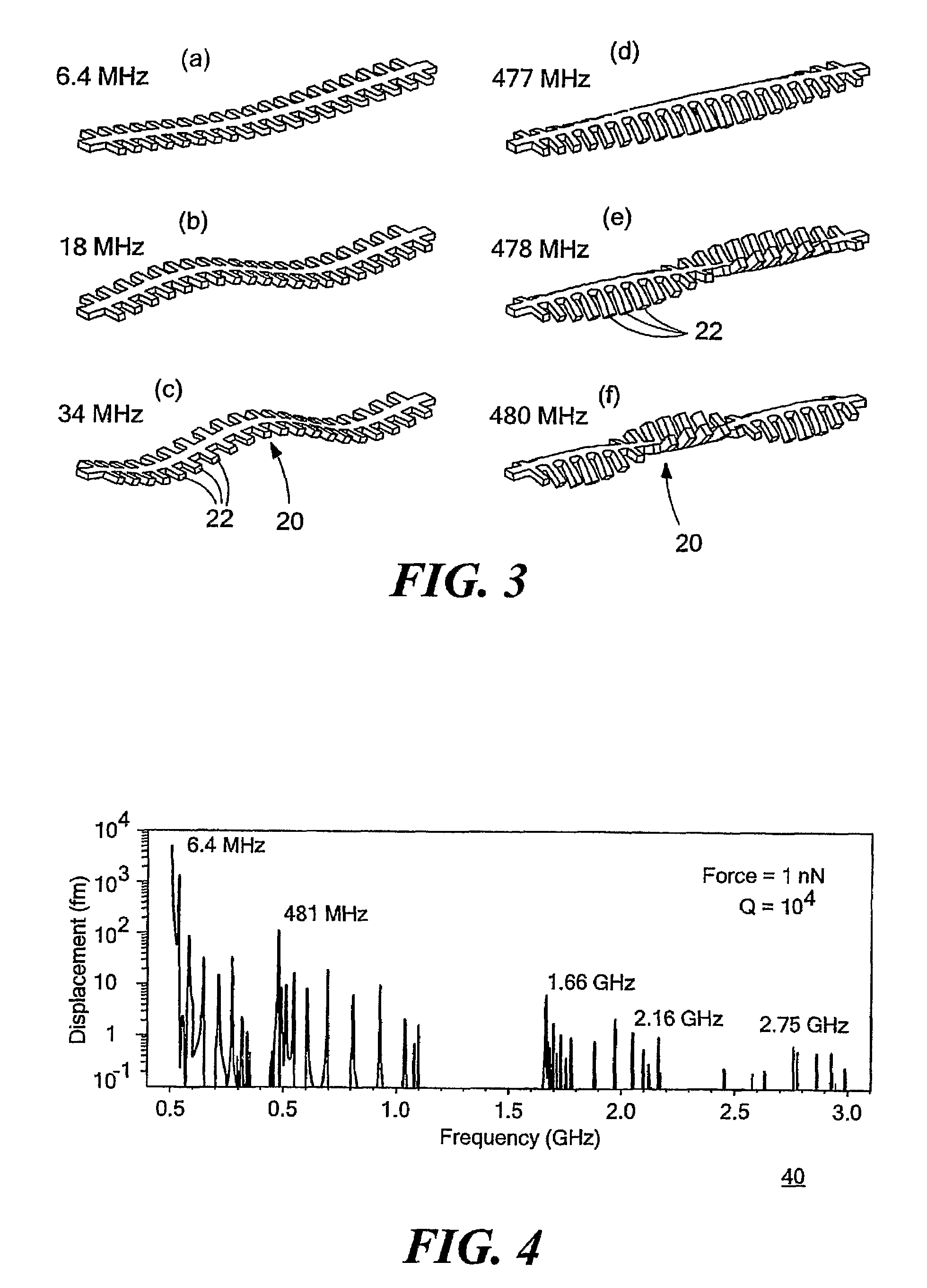Nanomechanical oscillator
a mechanical oscillator and nano-scale technology, applied in the field of nano-scale mechanical oscillators, can solve the problems of difficult detection of signal magnitude derived from the operation of nems devices, low efficiency, and inability to achieve the effect of easy detection
- Summary
- Abstract
- Description
- Claims
- Application Information
AI Technical Summary
Benefits of technology
Problems solved by technology
Method used
Image
Examples
Embodiment Construction
[0048]The present invention provides a mechanical oscillator with nanoscale components that permit vibration frequencies in the gigahertz and terahertz ranges. The nanoscale elements are part of a composite structure that can have elements on a larger scale, such as micrometer or millimeter scale. The nanoscale elements are coupled to the larger scale elements through an elastic mechanical coupling, for example. Excitation of the oscillator may be achieved according to a number of different techniques, including mechanical, electrostatic, electrical, electromagnetic, magnetomotive, piezoelectric and thermal expansion or contraction. The composite structure may have many different geometries for both major and minor elements, and several variations are discussed below for particular qualities. It should be apparent, however, that the present invention contemplates a wide variety of geometries to achieve the purpose of the present invention in producing a mechanical oscillator with na...
PUM
 Login to View More
Login to View More Abstract
Description
Claims
Application Information
 Login to View More
Login to View More - R&D
- Intellectual Property
- Life Sciences
- Materials
- Tech Scout
- Unparalleled Data Quality
- Higher Quality Content
- 60% Fewer Hallucinations
Browse by: Latest US Patents, China's latest patents, Technical Efficacy Thesaurus, Application Domain, Technology Topic, Popular Technical Reports.
© 2025 PatSnap. All rights reserved.Legal|Privacy policy|Modern Slavery Act Transparency Statement|Sitemap|About US| Contact US: help@patsnap.com



